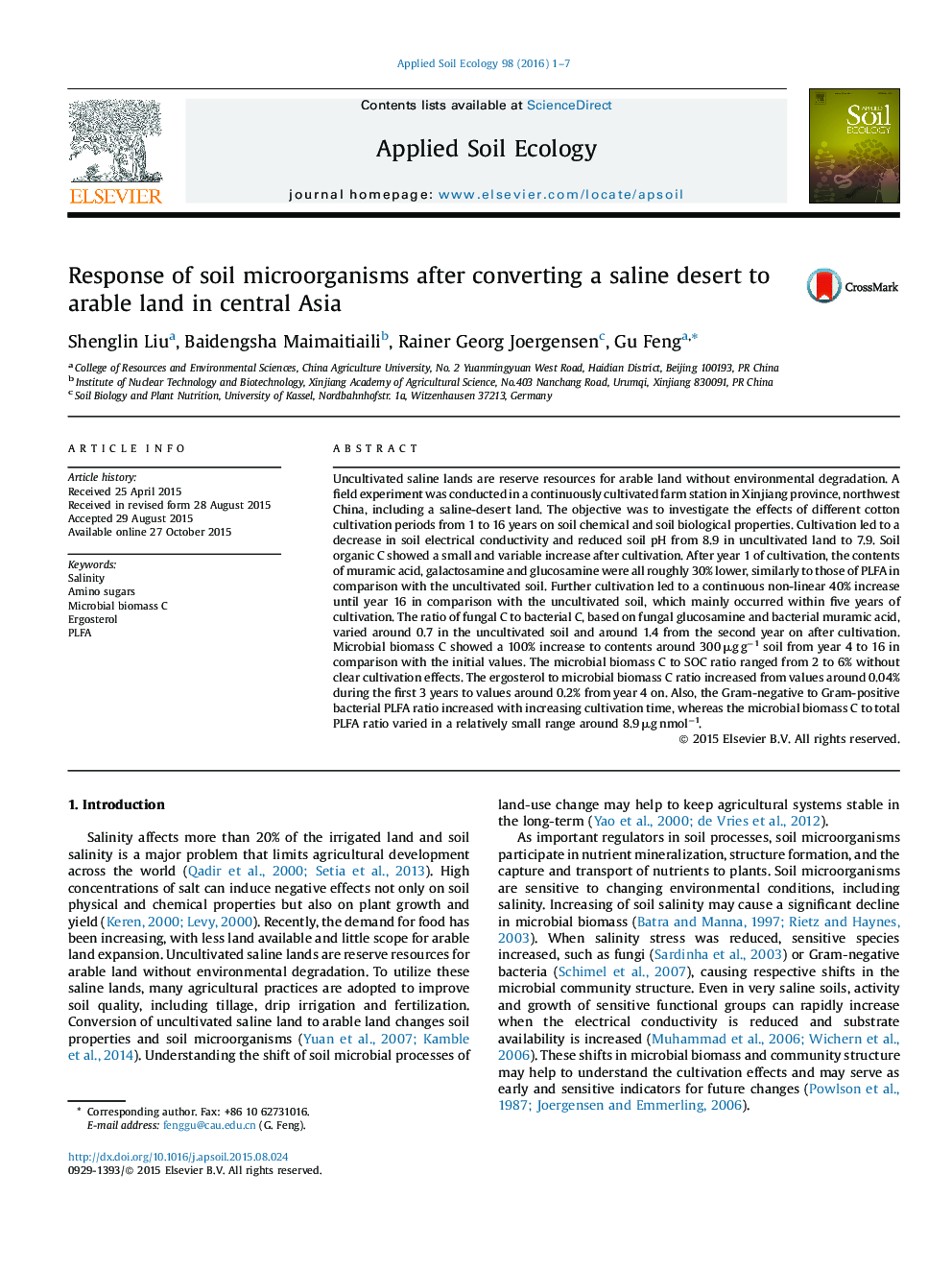| کد مقاله | کد نشریه | سال انتشار | مقاله انگلیسی | نسخه تمام متن |
|---|---|---|---|---|
| 4381851 | 1617785 | 2016 | 7 صفحه PDF | دانلود رایگان |
• Cultivation of a saline-desert soil with cotton induced a decrease in salinity and pH.
• After year 1 of cultivation, all soil microbiological indices declined.
• Then, theses indices increased within five years of cultivation, reaching new equilibria.
Uncultivated saline lands are reserve resources for arable land without environmental degradation. A field experiment was conducted in a continuously cultivated farm station in Xinjiang province, northwest China, including a saline-desert land. The objective was to investigate the effects of different cotton cultivation periods from 1 to 16 years on soil chemical and soil biological properties. Cultivation led to a decrease in soil electrical conductivity and reduced soil pH from 8.9 in uncultivated land to 7.9. Soil organic C showed a small and variable increase after cultivation. After year 1 of cultivation, the contents of muramic acid, galactosamine and glucosamine were all roughly 30% lower, similarly to those of PLFA in comparison with the uncultivated soil. Further cultivation led to a continuous non-linear 40% increase until year 16 in comparison with the uncultivated soil, which mainly occurred within five years of cultivation. The ratio of fungal C to bacterial C, based on fungal glucosamine and bacterial muramic acid, varied around 0.7 in the uncultivated soil and around 1.4 from the second year on after cultivation. Microbial biomass C showed a 100% increase to contents around 300 μg g−1 soil from year 4 to 16 in comparison with the initial values. The microbial biomass C to SOC ratio ranged from 2 to 6% without clear cultivation effects. The ergosterol to microbial biomass C ratio increased from values around 0.04% during the first 3 years to values around 0.2% from year 4 on. Also, the Gram-negative to Gram-positive bacterial PLFA ratio increased with increasing cultivation time, whereas the microbial biomass C to total PLFA ratio varied in a relatively small range around 8.9 μg nmol−1.
Journal: Applied Soil Ecology - Volume 98, February 2016, Pages 1–7
